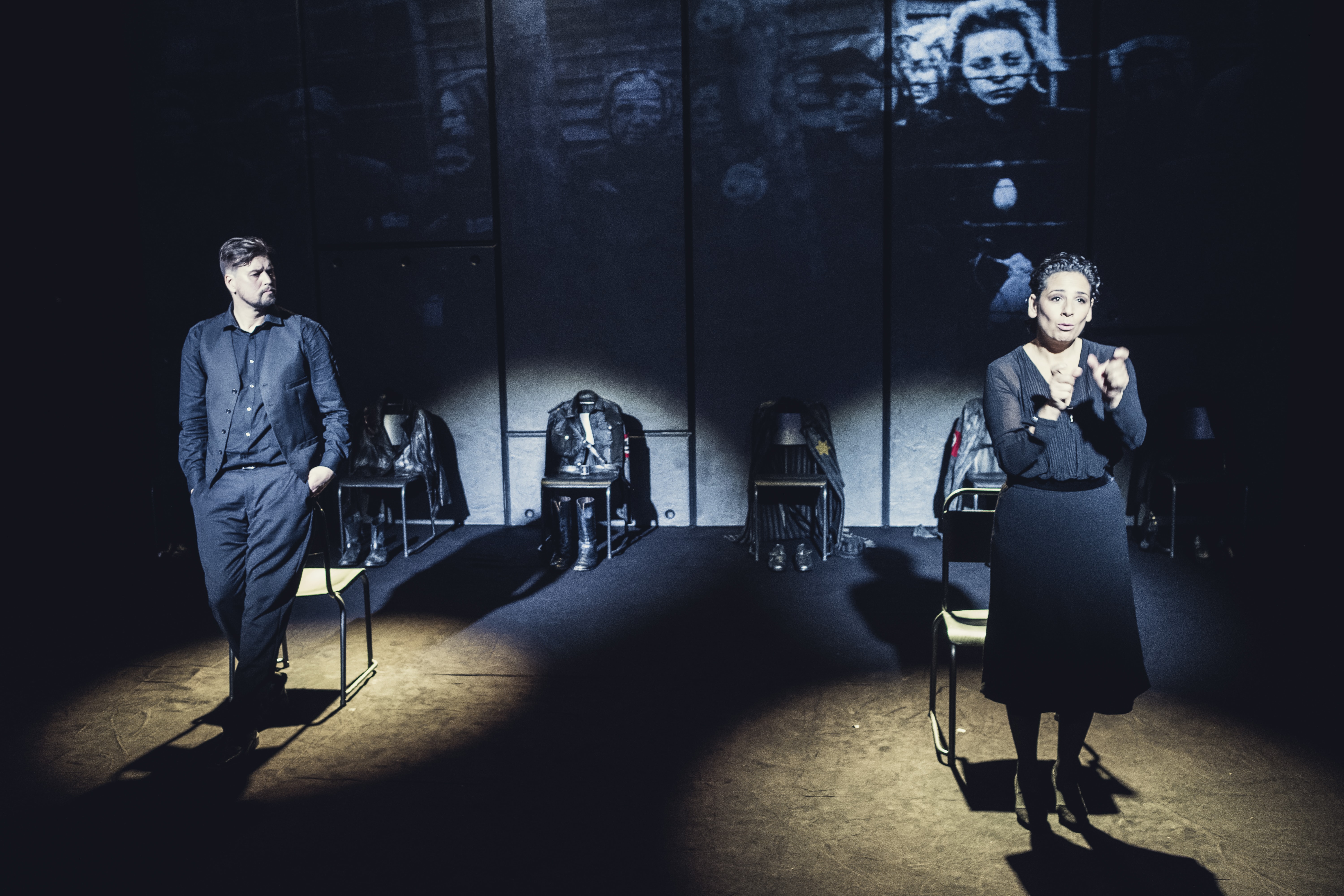We like to think that the Holocaust could never happen here. We want to believe that it shouldn’t so it couldn’t. And then comes along a work of theater like Crying Hands that screams out how incrementally the Holocaust happened—how that stain on human civilization began inconspicuously with a simple political ideology, a populist appeal to purify a nation through racial cleansing—and we are shocked back to reality: The distance between boys in white-nationalist MAGA hats and German youth in swastika armbands is merely a matter of time and degree.
Crying Hands tells the story of what happened to Deaf people in Nazi Germany. Until very recently that story has been hidden from history. It included—in the runup to Hitler’s “Final Solution”—the statutory sterilization of hundreds of thousands of Deaf men, women, and children in the 1930s along with systematic eugenics measures to eliminate the Deaf altogether. This cruel catastrophe is now being told as a riveting stage documentary by Teater Manu, a touring theater based in Norway that performs in American Sign Language.

I caught the production during its brief stop in Washington, DC, where it played to a rapt, mostly Deaf audience in the terrific Marvin Theatre at George Washington University. Against projections of a grim black-and-white documentary photomontage, three signing actors and one voice actor held the house captive with a ghastly narrative that could have happened back then to nearly everyone there.
The historical record that Crying Hands dramatizes is a crash course in the evils of biological superiority. We learn about the Nazis’ insidious campaign to “improve the human gene pool,” to “clean society,” to protect the nation from “degeneration.” We learn about “ideological marginalization,” the “registry for hereditary impairment,” academic research on “racial hygiene.” We learn how the technology of extermination developed steadily in lockstep with the expanding ideology of racial inferiority. The “Angel of Death” Dr. Josef Mengele got a head start by killing hundreds of thousands of children by injection and starvation, but that wasn’t really scalable. Gas chambers and crematories became necessary late-stage efficiencies.
The challenge of how to make all this horrific historical material assimilable on stage, much less relatable, would have deterred anyone less visionary and adept than Playwright and Director Bentein Baardson—and credit goes to Teater Manu Artistic Director Mira Zuckermann for tapping him for the task. Baardson’s inspired idea was to tell the story through the biographies of Hans and Gertrude—two composite characters based on interviews with Deaf survivors of the Holocaust. Nearly everything Hans and Gertrude say, we are told, is something once said by a survivor.

Hans (an energetically expressive Ronny Patrick Jacobsen) was born Deaf. A working-class motorcycle buff, he joins a Nazi stormtrooper unit. But in a purge of disabled soldiers, Hans is forced to be sterilized (“the Hitler cut”), becomes a political prisoner, and is sent to Auschwitz.
Gertrude (a compellingly poised Ipek D. Mehlum) is a hearing woman born to wealth. As a med student, she buys into Nazi ideology and becomes an active agent of anti-Deaf marginalization. But her worldview spins when she learns one of her grandmothers was Jewish.

A Narrator (an able Eitan Zuckerman) introduces and deftly segues between the third-person stories told by Jacobsen and Mehlum. All the while a Voice Actor (a richly resonant Kjersti Fjeldstad) sits stage left and interprets into a mic the three others’ signing.
The entire theater piece is presentational, descriptive, informative, and intense. There is little interaction between the quasi-fictional characters. As they stand and declaim to us and listen to each other, a montage of chillingly cold imagery and, at times, bursts of pounding sound assail us. The effects delivered by Video Designer Simon Valentine, Sound Designer Erik Hedin, and Lighting Designer Torkel Skjærven are powerful. The photomontage serves the storytelling with particular force; there are moments when a particular photo is so apt—such as a shot of a squadron of motorcyclists headed for the Brandenburg Gate—the script might well have been shaped to fit it.
The experience as a whole was not moving in any conventional theatrical sense; it was not intended to give us such feels. Nonetheless, Crying Hands is unforgettable, true to its purpose to fill a gap in Deaf history. As such it is also an essential piece of Holocaust history with a grave lesson for every one of us now: What happened then could already be happening again. Just not this time to the Deaf.
Running Time: 90 minutes, with no intermission.
Crying Hands played March 7 to 9, 2019, performed by Teater Manu—produced in collaboration with The Corcoran School of Arts and Design, Theatre & Dance Program of George Washington University—at the Dorothy Betts Marvin Theatre, 800 21st Street, in Washington, DC. The production has gone one to New York City and Toronto, and tickets for those performances are online.




